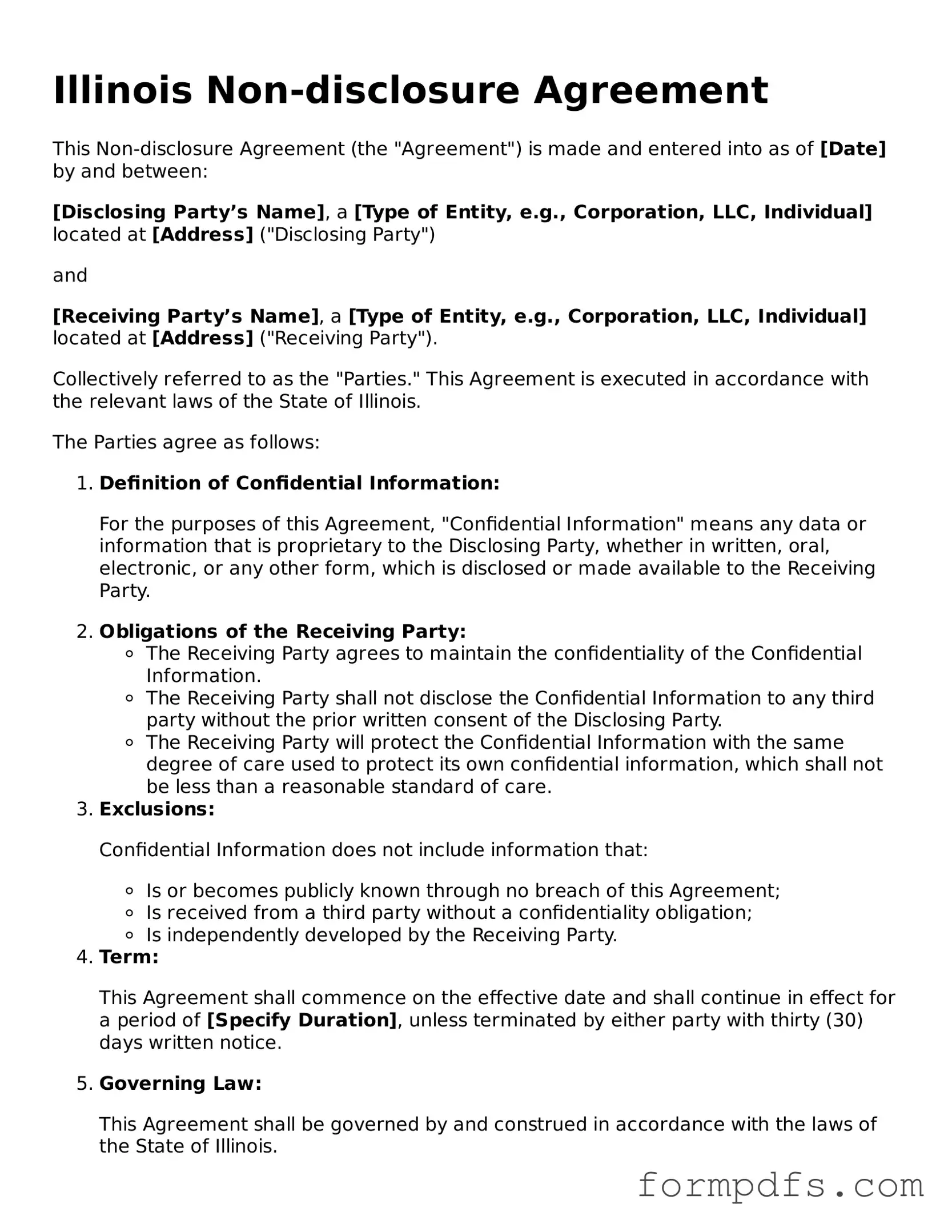What is an Illinois Non-disclosure Agreement (NDA)?
An Illinois Non-disclosure Agreement is a legal document that establishes a confidential relationship between parties. It is used to protect sensitive information from being disclosed to unauthorized individuals or entities. This agreement outlines the information considered confidential and the obligations of each party regarding that information.
Who typically uses an NDA in Illinois?
NDAs are commonly used by businesses, entrepreneurs, and individuals who wish to protect proprietary information. This includes trade secrets, business plans, client lists, and other sensitive data. Both employers and employees may enter into NDAs to safeguard company information during and after employment.
What information can be protected under an NDA?
Generally, an NDA can protect any information deemed confidential by the parties involved. This may include technical data, business strategies, financial information, marketing plans, and customer information. However, information that is publicly available or independently developed by the receiving party is typically not protected.
How long does the confidentiality obligation last?
The duration of confidentiality obligations varies and is usually specified in the NDA itself. Some agreements may require confidentiality for a specific period, such as two to five years, while others may extend indefinitely, especially for trade secrets. It is important for parties to agree on a reasonable timeframe that reflects the nature of the information being protected.
Can an NDA be enforced in Illinois?
Yes, NDAs can be enforced in Illinois courts, provided they are properly drafted and do not violate public policy. If one party breaches the agreement, the other party may seek legal remedies, which can include monetary damages or injunctive relief to prevent further disclosures.
Are there any limitations to what an NDA can cover?
Yes, there are limitations. An NDA cannot protect information that is already public knowledge, information independently developed by the receiving party, or information disclosed due to legal obligations. Additionally, the terms of the NDA must be reasonable and not overly broad to be enforceable.
How should an NDA be executed?
To execute an NDA, all parties involved must sign the document. This can be done in person or electronically, depending on the preferences of the parties. It is advisable to keep a copy of the signed agreement for future reference and to ensure all parties understand their obligations.
Is legal advice recommended before signing an NDA?
Yes, it is advisable to seek legal counsel before signing an NDA. An attorney can help clarify the terms of the agreement, assess its implications, and ensure that the document adequately protects the interests of the party involved. Understanding the obligations and potential risks associated with the NDA is crucial.
What should I do if I suspect a breach of an NDA?
If a breach of an NDA is suspected, it is important to document any evidence of the breach and review the terms of the agreement. The affected party may consider contacting the other party to discuss the issue. Legal action may be necessary if the breach has caused significant harm, and consulting with an attorney is recommended to explore available options.
